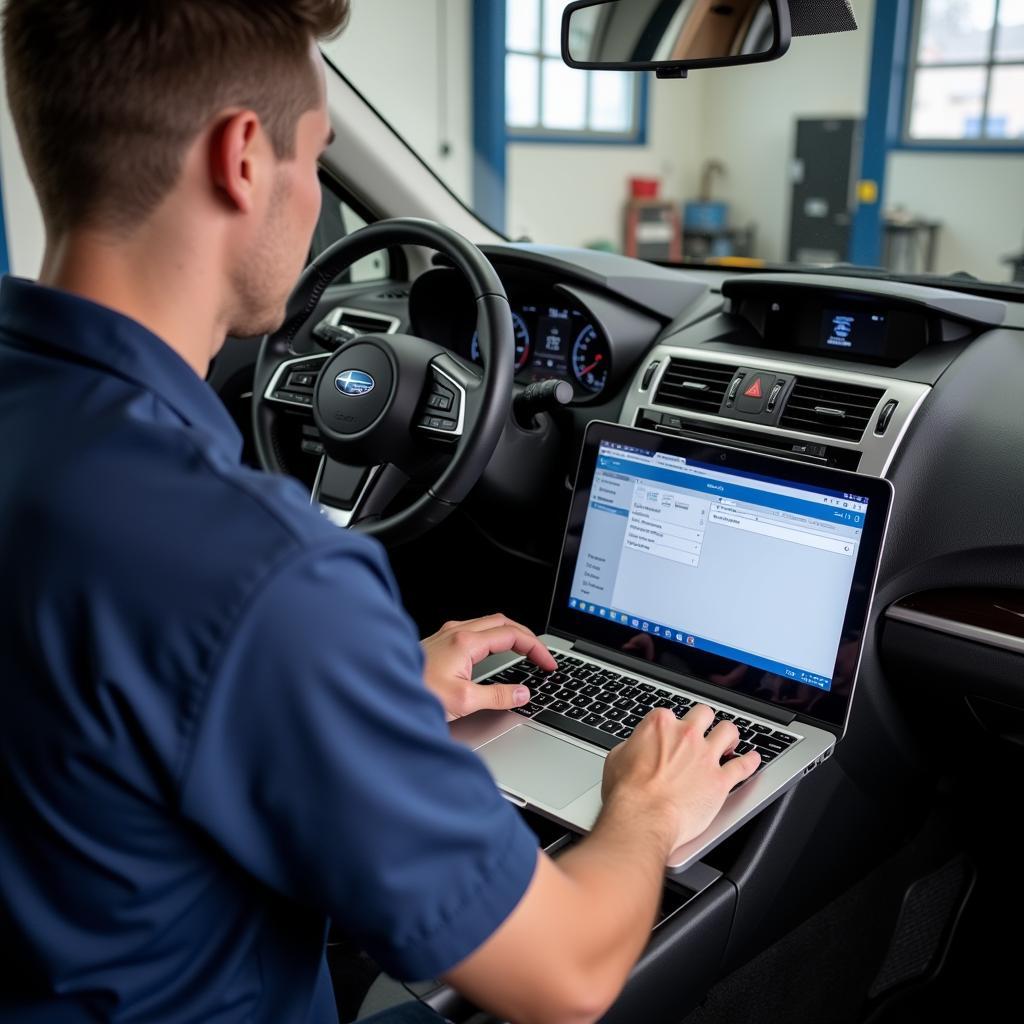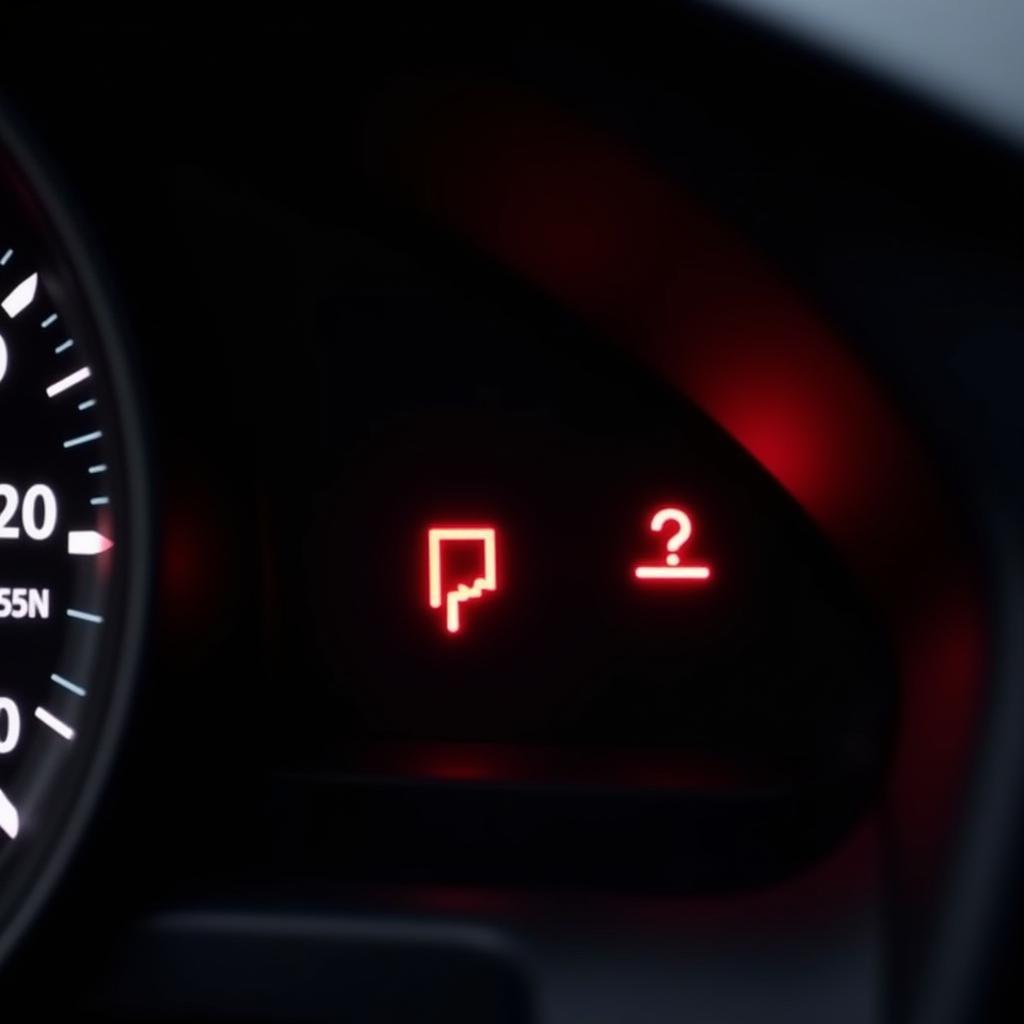Replacing your brake pads is an essential part of vehicle maintenance. If you drive a GM vehicle equipped with a 7.75″ 9-bolt Borg-Warner rear axle, this comprehensive guide will walk you through the process of changing your brake pads safely and effectively.
Gathering Your Tools and Parts
Before you begin, it’s crucial to gather all the necessary tools and parts. This ensures a smooth and efficient replacement process. Here’s what you’ll need:
- New Brake Pads: Purchase brake pads specifically designed for your GM vehicle with a 7.75″ 9-bolt Borg-Warner rear axle.
- Jack and Jack Stands: These are essential for safely lifting and supporting your vehicle.
- Lug Wrench: You’ll need this to loosen the lug nuts on your wheel.
- Socket Wrench Set: A socket wrench set with various sizes is needed to remove caliper bolts and other components.
- C-Clamp: This tool helps compress the caliper piston back into the caliper, creating space for the new, thicker brake pads.
- Brake Cleaner: Using brake cleaner helps remove dirt, grease, and old brake dust for optimal performance.
- Gloves: Wearing gloves protects your hands from dirt and grime while working on your brakes.
- Safety Glasses: Always wear safety glasses to shield your eyes from debris.
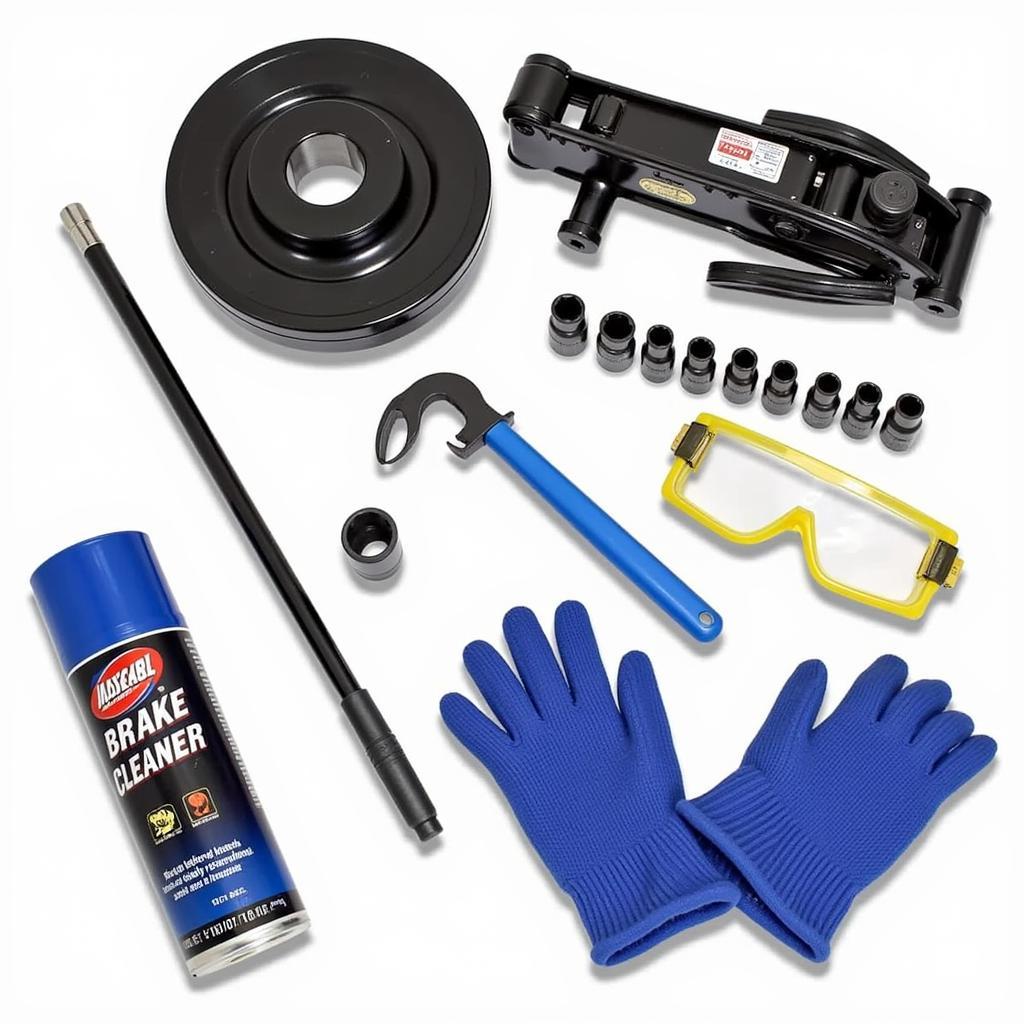 Tools for brake pad replacement
Tools for brake pad replacement
Step-by-Step Brake Pad Replacement
Follow these steps carefully to replace the brake pads on your GM vehicle:
-
Safety First: Park your vehicle on a level surface and engage the parking brake.
-
Loosen Lug Nuts: Using the lug wrench, loosen the lug nuts on the wheel where you will be replacing the brake pads. Do not remove them completely at this stage.
-
Lift the Vehicle: Using the jack, carefully lift the vehicle at the designated jacking point near the rear wheel you are working on. Ensure the vehicle is securely supported on jack stands before proceeding.
-
Remove the Wheel: With the vehicle securely lifted, completely remove the lug nuts and remove the wheel.
-
Locate the Caliper: Behind the wheel hub, you’ll see the brake caliper. It’s typically mounted to the wheel assembly with two bolts.
-
Remove Caliper Bolts: Use the appropriate socket size to remove the caliper bolts. Once the bolts are removed, carefully swing the caliper away from the rotor.
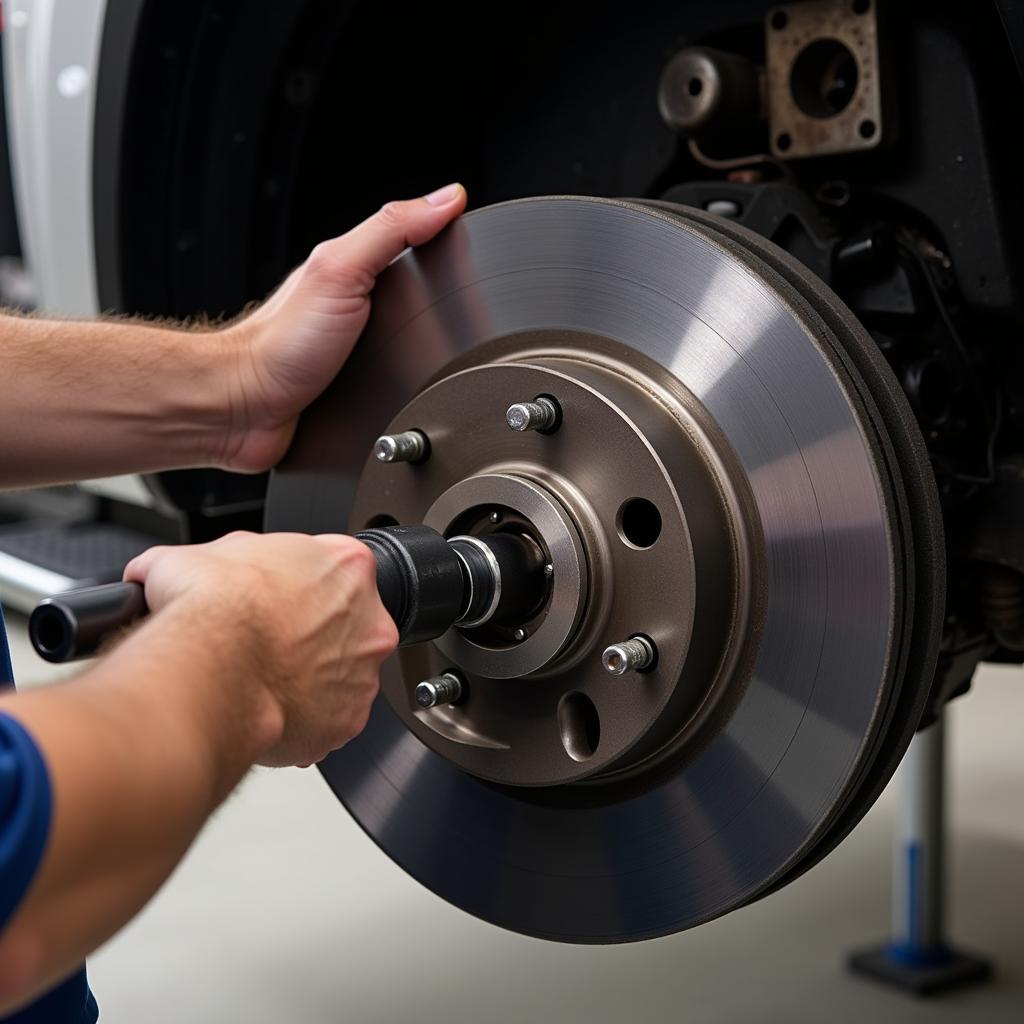 Removing the brake caliper bolts
Removing the brake caliper bolts -
Inspect the Rotor: With the caliper out of the way, you can now inspect the rotor for any signs of wear, such as grooves or scoring. If the rotor is excessively worn, it’s best to have it resurfaced or replaced.
-
Remove Old Brake Pads: The old brake pads will be housed within the caliper bracket. Gently remove them, taking note of their orientation for installing the new pads correctly.
-
Compress the Caliper Piston: Using the C-clamp, compress the caliper piston back into its bore. This is essential to create enough space for the new, thicker brake pads.
-
Install New Brake Pads: Insert the new brake pads into the caliper bracket, ensuring they are seated correctly in the same orientation as the old pads.
-
Reinstall Caliper: Carefully align the caliper over the rotor and new brake pads. Thread the caliper bolts by hand to ensure proper alignment before tightening them with the socket wrench.
-
Reinstall Wheel: Place the wheel back onto the hub, aligning it with the lug studs. Hand-tighten the lug nuts.
-
Lower Vehicle: Using the jack, carefully lower the vehicle until the tire just touches the ground.
-
Torque Lug Nuts: Using the lug wrench, tighten the lug nuts in a star pattern to the manufacturer’s specified torque.
-
Test Brakes: Before driving, pump the brake pedal several times to restore pressure and ensure the brakes are functioning correctly.
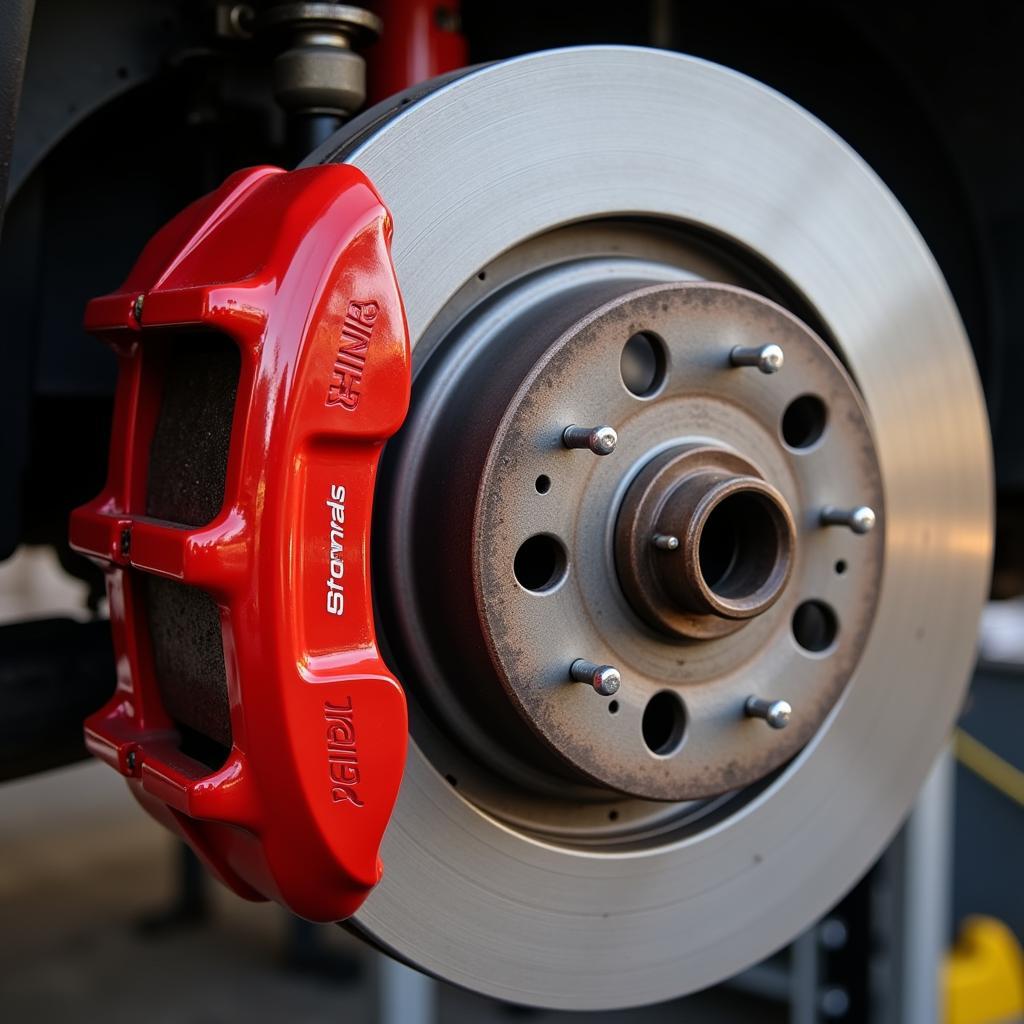 Installed brake pads on a GM 7.75" 9-bolt Borg-Warner rear axle
Installed brake pads on a GM 7.75" 9-bolt Borg-Warner rear axle
Frequently Asked Questions
Q: How often should I replace my brake pads?
A: Brake pad lifespan can vary greatly depending on driving habits and conditions. It’s generally recommended to have your brakes inspected annually.
Q: Can I replace just one brake pad, or should I replace both at the same time?
A: It’s always best practice to replace brake pads in pairs (both on the same axle) to ensure even braking performance.
Q: What are the signs of worn brake pads?
A: Common signs include a squealing or grinding noise when braking, a spongy brake pedal, and reduced braking performance.
Q: How do I know if my brake rotors need resurfacing?
A: If your rotors have deep grooves or scoring, they may need resurfacing or replacement.
Q: Is it safe to drive with worn brake pads?
A: Driving with worn brake pads is extremely dangerous and can lead to brake failure.
By following this guide, you can safely and confidently replace the brake pads on your GM 7.75″ 9-Bolt Borg-Warner equipped vehicle. However, if you are unsure about any part of this process, it is always recommended to consult a qualified mechanic. Remember, regular brake maintenance is crucial for your safety and the longevity of your vehicle.

